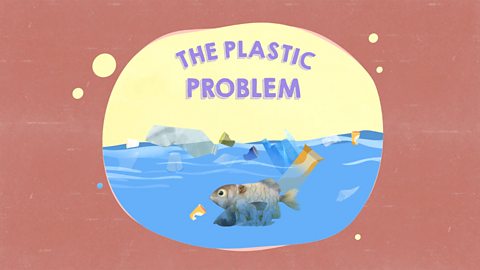Naomi Wilkinson and her young helpers find out about the oceans of the world.
NAOMI: Oh that looks like fun, what are you running away from?
CHILDREN: The sea!
NAOMI: Oh no! Careful you don't get wet!
Most of our planet, Earth, is covered in saltwater. In fact, there's more water than land on the Earth's surface. We call these areas of saltwater oceans.
The Earth has five oceans: The Atlantic Ocean, the Pacific Ocean, the Arctic Ocean, the Indian Ocean and the Southern Ocean.
The Atlantic surrounds the United Kingdom, where we live. Around our coasts the Atlantic Ocean is made up of four smaller areas of water: The North Sea, the Irish Sea, the Celtic Sea, and the English Channel.
One of our explorers has been visiting the coast near them.
ANEESHWAR: Hi guys, my name's Aneeshwar and here's my dad. And we're here to explore this beach. Come on, let's explore!
This is the Irish sea and it's a small part of the Atlantic Ocean. It's windy and the sea looks very, very choppy. I see a lot of boats travelling back and forth here today.
Thanks for exploring the Irish Sea with us, bye!
NAOMI: Thanks, Aneeshwar! The Atlantic Ocean isn't just close to the UK. It's the second largest ocean in the world and it stretches all the way from the top part of the Earth, the North, to the bottom part, the South. In some parts the water of the Atlantic Ocean can be very cold. But in other parts the water can be as warm as a bath! Ahh. Ok where next?
CHILD: The Pacific Ocean!
NAOMI: Ah, yes! The Pacific Ocean is the biggest ocean in the world. Look it touches the coastlines of Asia, Australasia, North America and South America. It contains just over half of all the world's ocean water. It's also the deepest ocean. In the Pacific Ocean there is a very deep bit called The Mariana Trench. It's so deep that the tallest mountain on Earth, Mount Everest, could sit on the bottom and still not reach the surface of the water. Okay, where to now?
CHILD: The Arctic Ocean!
NAOMI: The Arctic Ocean is the smallest ocean that goes around the very top of the Earth. It's also one of the coldest oceans. It's so cold during the winter, that most of the Arctic Ocean turns to ice. But that doesn't stop lots of people and animals living in or near the Arctic Ocean. Brrrrrrrrrrrr! That looks cold. Where shall we go next? Somewhere warm please!
CHILD: The Indian Ocean!
NAOMI: Oh, great! The warmest ocean. The Indian Ocean is down here below Southern Asia. If you went to the seaside in westernAustralia or the east coast of Africa, you would be swimming in the Indian Ocean, which would be lovely because it's not too hotand not too cold. So it's a bit like swimming in an indoor swimming pool in the UK. So that's four oceans which means we have just one more to go.
CHILD: The Southern Ocean!
NAOMI: The Southern Ocean is found around Antarctica. It connects to the Indian Ocean, the Pacific Ocean and the Atlantic Ocean. The Southern Ocean goes all the way around the bottom or southern part of the Earth. In the winter the Southern Ocean gets so cold that some of it turns to ice and you can see icebergs. Oooh! That really does look cold!
Speaking of cold, it looks like it's time for you lot to get warmed up.
The oceans of the world
Download/print a transcript of the video.
This resource explores the five oceans of the world, highlighting where they can be found and that the majority of Earth’s surface is made up of salt water.
Some features of each ocean are explored in turn. The Atlantic Ocean is the second largest ocean and its waters have large differences in temperature. The Pacific Ocean borders three continents - Asia, North / South America and Oceania - and includes the deepest water, called the Mariana Trench. The Arctic Ocean is the smallest and one of the coldest oceans. In contrast, the Indian Ocean has some of the warmest waters. The Southern Ocean surrounds Antarctica and, like the Arctic Ocean, is very cold.
Points for discussion:
- How many oceans are there?
- Which is the largest and smallest ocean?
- Which ocean is the coldest?
- What type of water can be found in our oceans?
- What do you think life is like for animals living around the Arctic and Southern Oceans?
- How do you think animals here have adapted?
Suggested activities:
Pupils could work to label a world map, showing the locations of the five oceans and could carry out research to find the approximate size of each, ranking these from largest to smallest.
Pupils could explore the wildlife which can be found in each ocean. Is there a theme or common set of features - eg insulation for animals living in the Arctic or Southern Oceans?
To explore scale and size, pupils can use cubes to make scale models of the height of things, such as the Burj Khalifa, Mount Everest and other tall features of the planet.
Following this, pupils can use cubes to make a comparison with how deep the Mariana Trench is. How many of the ‘tall’ features they have made would fit into the Mariana Trench?
Can pupils carry out an investigation to change salt water to fresh water, separating the salt from the water? (The activity requires hot water, so will need to be supervised).
Discuss the challenges humans face because the majority - nearly 96% - of the water on the planet is salt water.
This film is relevant for teaching Geography within the National Curriculum in England and Northern Ireland at KS1, 1st Level in Scotland and the Humanities Area of Learning and Experience within the Curriculum for Wales at Progression Step 2.
Further resources
Map showing the oceans of the world. image
Click to display image full size
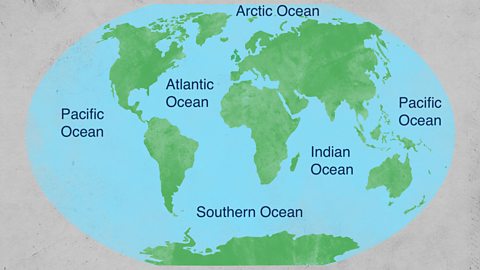
The seas around the UK. image
Click to display image full size
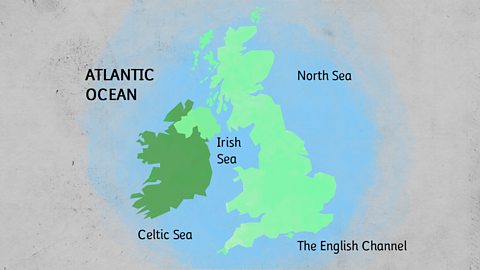
Map showing the Arctic Ocean. image
Click to display image full size
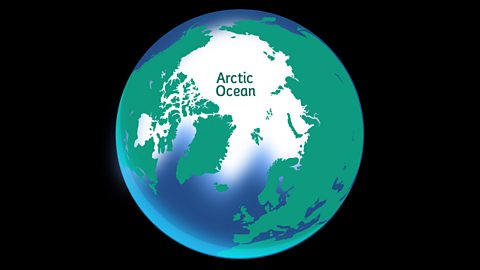
Life beneath the waves. video
Exploring the characteristics of fish and some examples of wonderful marine life.
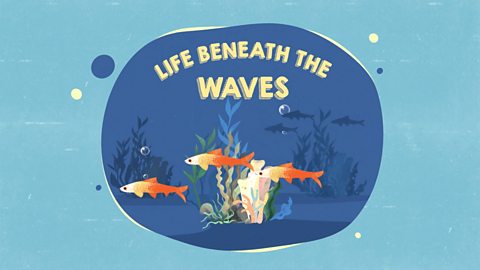
The problem with plastic pollution in oceans and seas. video
Exploring the problems posed by plastic waste to oceans and marine life.
